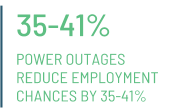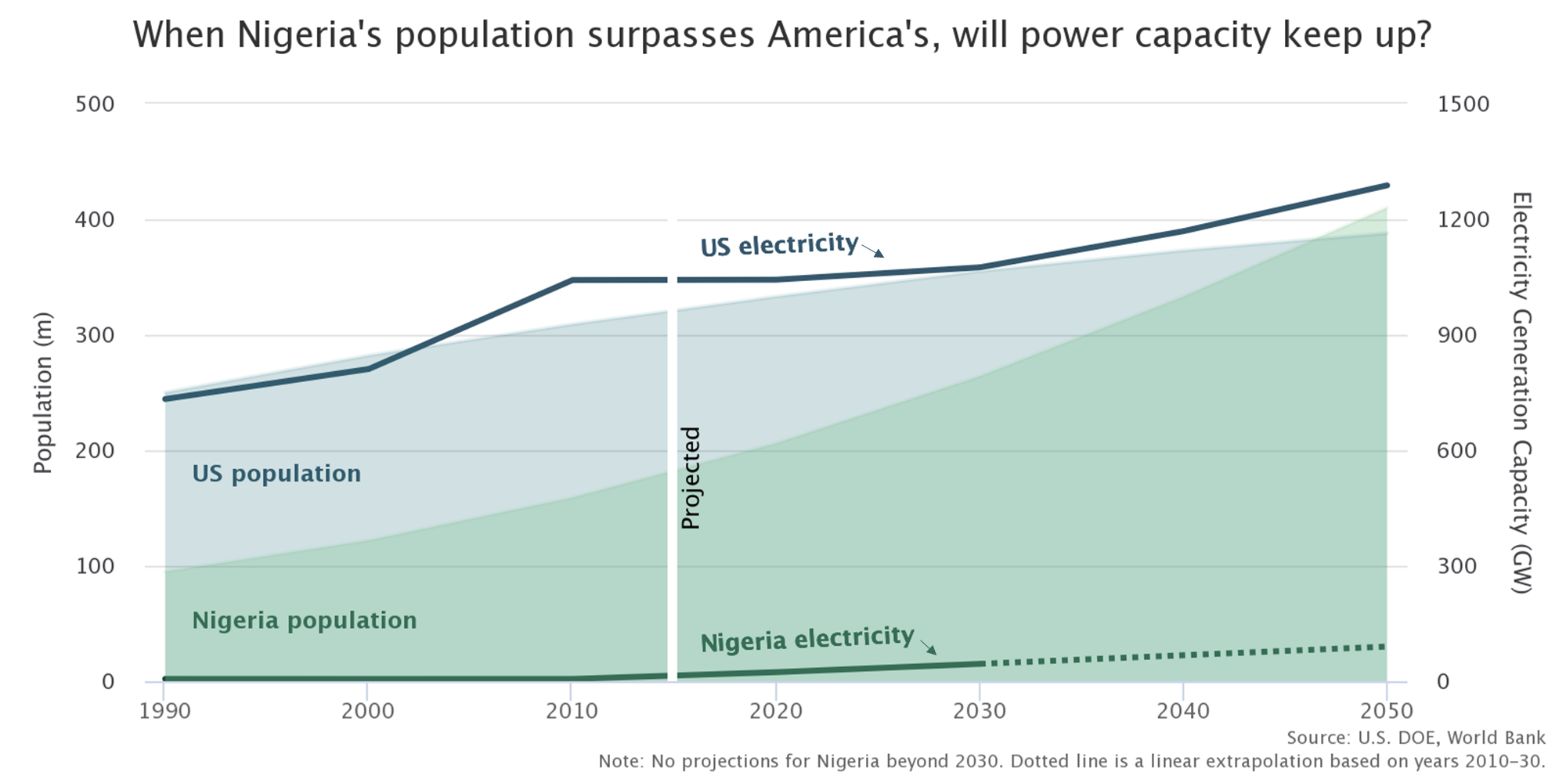Problem 1: Africa needs jobs. Only a fraction of the 10-12 million African youth that enter the workforce each year find formal employment.1
Problem 2: Jobs require energy. Data and research show that the lack of affordable and reliable energy is one of the top constraints to employment creation in nearly every African economy.
Why it matters: A low energy future is a jobless future. Nigeria alone will have a population larger than the United States by around 2045 — but is on track for only 2 percent of America’s electricity generation capacity (see Figure 1). If millions of young Africans and their families are to escape poverty and have a more stable and prosperous future, the challenges of large-scale power must be solved.
The Evidence: Growing literature connects reliable, low-cost energy with:
- Productivity. African firms identify poor infrastructure, especially power, as a leading constraint to productivity and firm expansion.2
- Profitability. Country studies on the impact of power outages showed significant negative effects on productivity in Zambia, production costs in Ethiopia, and SME sales in Senegal.3

- Job creation. Electricity shortages were found to reduce the likelihood of an individual being employed in a high skilled job by 35-41% and of being self employed by 32-47%.4
- Female labor supply. In rural South Africa, electrification freed up time and energy for women to find paid formal work, increasing employment by 9%.5
- Economic growth. Overall, energy capital investments accounted for around one-third of Africa’s growth resurgence since 2000.6
Conclusion: Africa needs—and deserves— a high-energy future.
Africa’s future prosperity depends in large part on solving the energy gaps, not just for homes but also to provide affordable, reliable power for businesses. This means that countries will still require a functioning grid and large-scale power sources. Success will depend on policy reforms, increased investment, and new technology—all of which create opportunities to contribute by governments, development partners, researchers, and philanthropy.
FIGURE 1: Many African countries, like Nigeria, will not have sufficient power capacity to keep up with growing populations and demand for jobs.
Endnotes
- “Jobs for Youth in Africa Strategy (2016-2025),” African Development Bank, 2016.
- Abotsi, Anselem Komla, “Power Outages and Production Efficiency of Firms in Africa,” International Journal of Energy Economics and Policy, 2016; Ramachandran, Vijaya et al., “Africa’s Private Sector: What’s Wrong with the Business Environment and What to Do About It,” Center for Global Development, 2009.
- Sichone, Yimbilanji et al., “Electricity load shedding: An econometric analysis of the productivity of firms in the manufacturing sector in Lusaka,” International Journal of Commerce and Management Research, 2016; Tariku, Lamessa, “Power Outages, Its Economic Cost and Firm Performance: Evidence From Ethiopia,” University of Milan, 2018; (WILL DOWNLOAD PDF) Cissokho, Lassana and Abdoulaye Seck, “Electric Power Outages and the Productivity of Small and Medium Enterprises in Senegal,” Investment Climate and Business Environment Research Fund, 2013.
- Mensah, Justice, “Jobs! Electricity Shortages and Unemployment in Africa,” World Bank, 2018.
- Dinkelman, Taryn, “The Effects of Rural Electrification on Employment: New Evidence from South Africa,” American Economic Association, 2011.
- Fried, Stephie and David Lagakos, “The role of energy capital in accounting for Africa’s recent growth resurgence,” International Growth Centre, 2017.
